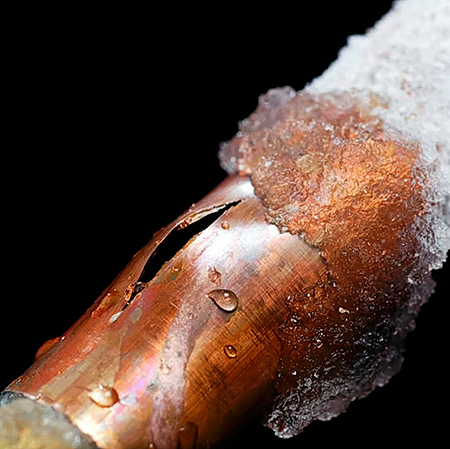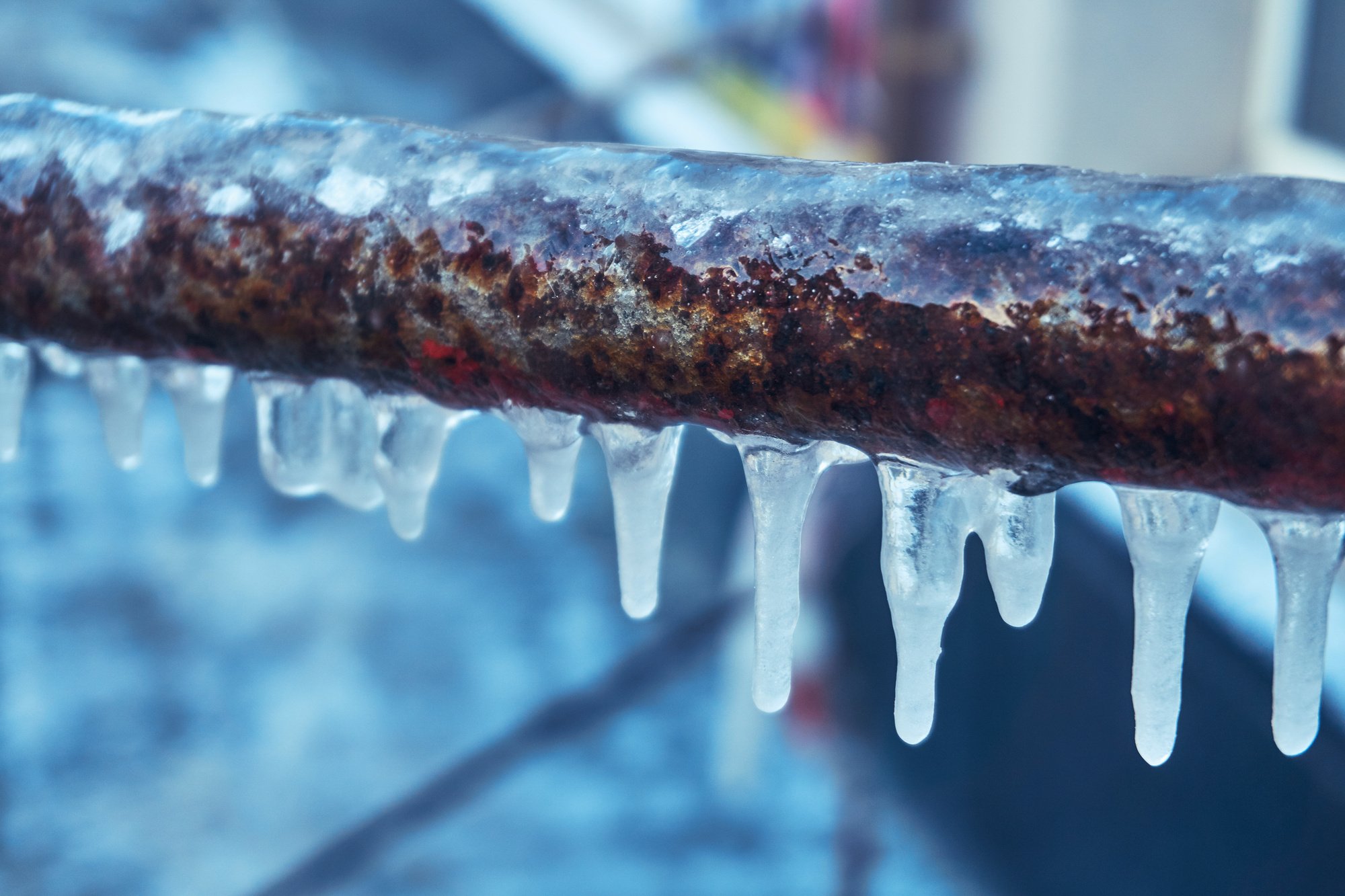Steps to Take If My AC Pipe Is Frozen - Immediate Solutions for Thawing
Steps to Take If My AC Pipe Is Frozen - Immediate Solutions for Thawing
Blog Article
Just how do you feel when it comes to Why Is Ice On My Outside Air Conditione?

Introduction
Discovering that your air conditioner pipe is frozen can be worrying, specifically throughout warm summer months when you rely upon your ac unit the most. Recognizing what to do in such a situation is critical to prevent further damages to your air conditioning system and ensure your convenience inside.
Understanding the Causes
A number of variables can add to the cold of an air conditioner pipe. Understanding these causes can assist you resolve the concern effectively.
Lack of Airflow
One common source of an icy air conditioner pipeline is inadequate air movement. When the air movement over the evaporator coil is limited, it can cause the coil to drop below freezing temperature, leading to ice formation on the pipeline.
Reduced Refrigerant Levels
Inadequate refrigerant degrees in your air conditioner system can likewise lead to a frozen pipe. Reduced cooling agent levels can create the stress in the system to drop, bring about the freezing of moisture on the evaporator coil.
Winter Conditions
In colder environments, freezing temperature levels outside can contribute to the freezing of a/c pipes. If your air conditioner unit is not appropriately shielded or if there are leakages in the ductwork, cold air can penetrate the system, creating the pipeline to freeze.
Dirty Air Filters
Unclean or blocked air filters can limit air movement in your air conditioning system, bring about various problems, consisting of an icy pipeline. It's essential to replace or cleanse your air filters on a regular basis to make certain proper airflow and prevent ice buildup.
Signs of a Frozen Air Conditioning Pipe
Acknowledging the indications of a frozen air conditioning pipe is essential for prompt action.
Lowered Airflow
If you notice a significant decline in air movement from your vents, it might indicate an icy pipe.
Ice Buildup on the Pipe
Visible ice build-up on the cooling agent line or the evaporator coil is a clear indicator of a frozen AC pipe.
Unusual Sounds from the Unit
Unusual noises, such as hissing or gurgling, originating from your air conditioning system can indicate that there's ice existing on the pipe.
Immediate Actions to Take
When faced with a frozen air conditioning pipe, it's necessary to act rapidly to prevent further damage to your cooling system.
Turning off the AC
The first step is to switch off your ac system to prevent the system from running and aggravating the problem.
Checking for Blockages
Inspect the location around the interior device for any type of blockages that may be obstructing airflow, such as furnishings or curtains.
Thawing the Pipe
You can make use of gentle methods like putting towels soaked in warm water around the frozen pipeline to aid thaw it slowly.
Preventive Measures
Taking preventive measures can aid prevent future occurrences of an icy air conditioner pipeline.
Regular Maintenance Checks
Set up routine maintenance checks with a professional HVAC technician to make certain that your air conditioning system is running successfully.
Altering Air Filters
Routinely change or clean your air filters to avoid air movement constraints and maintain ideal efficiency.
Insulating Exposed Pipes
If your a/c pipelines are exposed to chilly temperature levels, think about shielding them to prevent freezing during winter season.
Seeking Professional Help
If DIY methods fail to resolve the issue or if you're unclear about how to continue, it's finest to seek assistance from a certified HVAC specialist.
When DIY Methods Fail
If your attempts to thaw the pipeline or address other issues are not successful, it's time to call in a specialist.
Value of Hiring a Professional HVAC Technician
A certified HVAC professional has the competence and tools needed to diagnose and fix issues with your a/c system safely and effectively.
Conclusion
Dealing with a frozen air conditioner pipeline can be a frustrating experience, but understanding how to react can aid lessen damage and restore convenience to your home. By recognizing the reasons, acknowledging the signs, and taking punctual action, you can successfully deal with the issue and protect against future incidents.
What to Do If Your AC Line Is Frozen
Make Sure All Supply and Return Air Vents Are Open
If you notice problems with airflow, the first thing you should do is check your supply and return vents. Supply vents distribute clean, conditioned air throughout your home. As this air becomes stale, it’s pulled into the return vent, where it’s reconditioned before being sent back out through the supply vent.
When these vents are closed, air won’t flow in the home. Before examining your AC, check the vents in every room and ensure they’re all open.
Check for a Dirty Air Filter
Another possible cause of limited airflow is a dirty air filter. Your air conditioner’s filters catch elements you don’t want to breathe in, such as dirt and dust. Over time, filters can become clogged, ultimately blocking air from flowing in and out. The lack of airflow can then cause the entire coil to freeze and will completely restrict any air from moving through it. The AC may need to be powered off for one to two days to allow the coil to thaw after replacing the filter to allow proper functioning of the unit. This debris can also accumulate on your AC’s evaporator coil, requiring a more serious repair. In general, air filters should be cleaned regularly (about every two weeks).
Assess Your Outdoor Unit
In addition to checking your AC, assessing the outdoor unit is a good idea. Also known as the condensing unit, it works with your interior unit to release heat outside. An issue with the outdoor unit can result in rising internal temperatures.
Overgrown Shrubs or Clogged Leaves
From leaves and twigs to shrubs and debris, there’s no shortage of outdoor elements that can accumulate around your condensing unit. When these elements get lodged inside the unit, they can block airflow. Fortunately, removing the blockage can solve the problem.
Sounds of a Broken Fan
Shrubs and leaves aren’t the only things that can impede your outdoor unit’s airflow. If the fan is broken, the unit won’t be able to properly get rid of heat — which means the internal temperature won’t go down. First, make sure the fan is spinning. If it is, check for the following sounds of a broken fan:
Buzzing Rattling Screeching Hissing Clicking Preventative Measures
Nobody wants to deal with a frozen AC line. In addition to causing problems with your air conditioner, they require professional repairs. On the bright side, there are preventative measures you can take to help ensure this issue doesn’t arise in the first place.
https://www.coopergreenteam.com/blog/what-to-do-if-ac-line-frozen

I'm very intrigued by Air Conditioner Frozen? How To Fix your Frozen AC Line and I hope you enjoyed the blog posting. Enjoyed reading our article? Please share it. Let somebody else find it. We recognize the value of reading our article about What Causes AC Pipes To Freeze?.
Order Repair Report this page